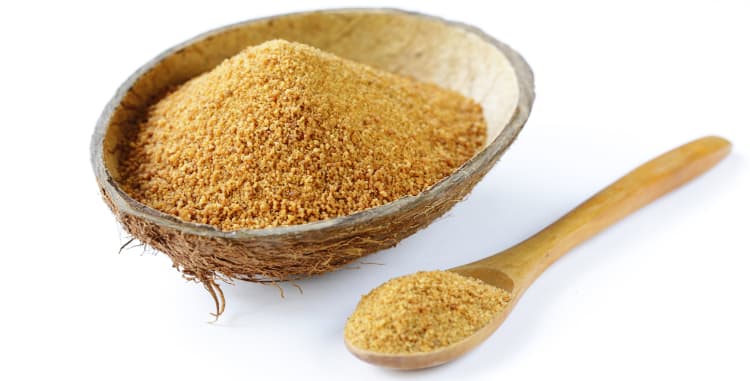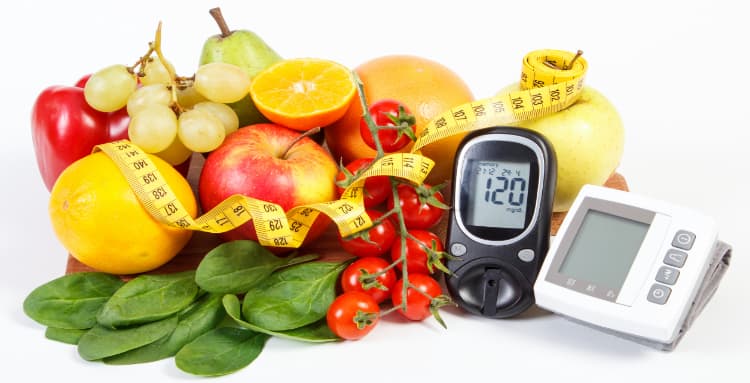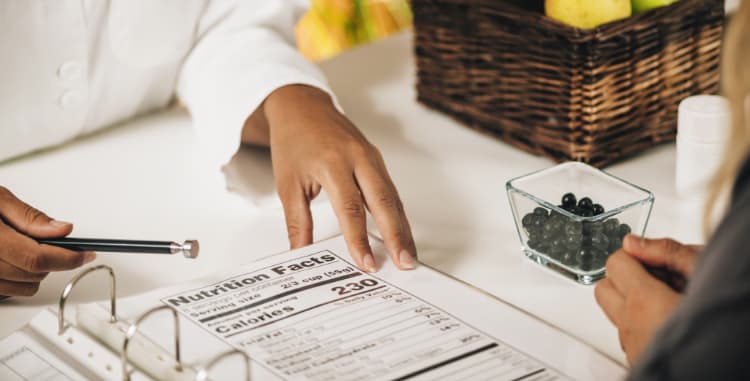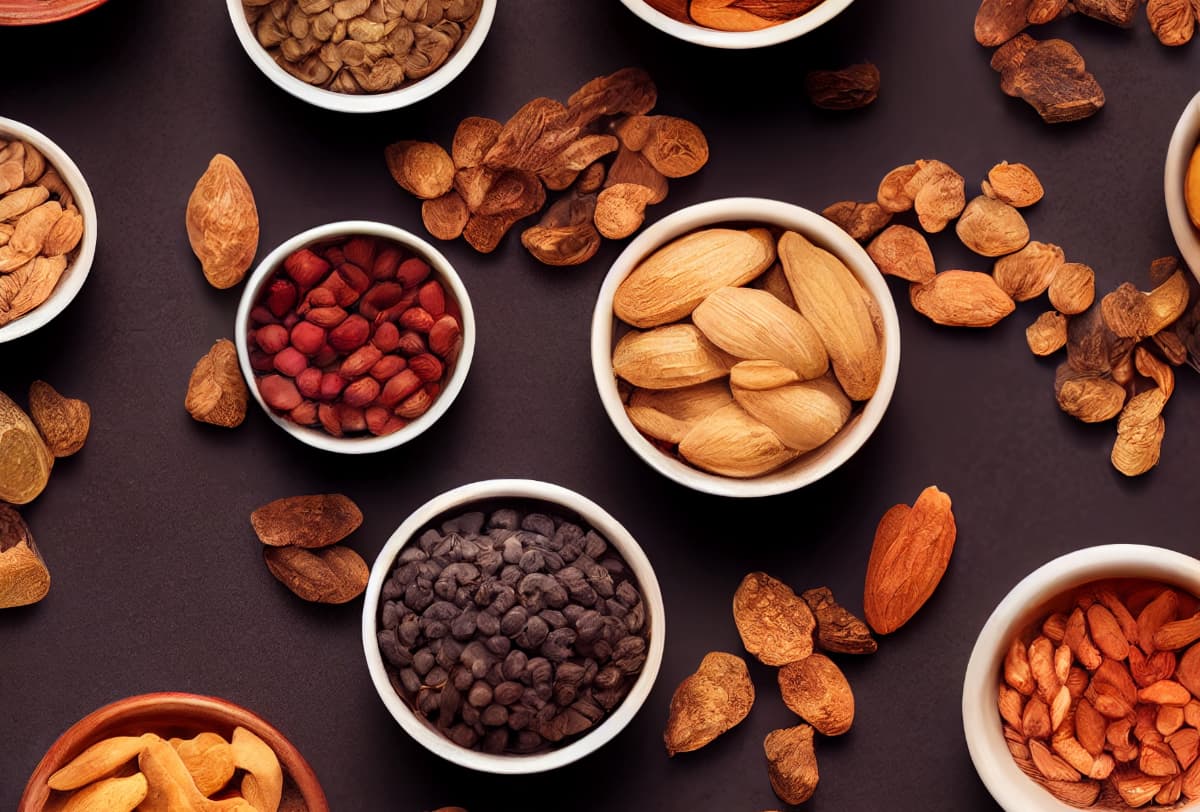
Coconut Sugar? What do you get when you cross my 7-year-old, four-legged furry kid with sweetener?
You get my very own sweet sugar baby – my dog Coconut!
Sorry for being corny—again.
But in all seriousness, one of the most common questions I get asked as a certified nutritional therapist and creator of The Chef V Organic Cleanse is this: Is coconut sugar healthier than regular sugar?
Let’s dive in and find out what the research says…

What Is It?
Actually, before we follow the science on coconut sugar, let’s cover some basic facts on the natural alternative sweetener.
It does not come from the meaty white flesh of the nuts. It’s also not produced from the husky shell. And it’s not made from the liquid within the nut (coconut water).
So what is it made from? It’s made by dehydrating the sap contained in the flower bud of the stem of coconut palm trees. You could say that the sap is the circulating life force or the blood of the tree. And just like the blood circulating through your veins contains minerals and trace minerals that are vital for energy, coconut sap is rich in minerals. But we’ll get to that in a bit…
Coconut blossom sugar, is all-natural. Although it comes from the coconut palm tree, do not confuse it with palm sugar. Regular palm sugar is sourced from a different type of tree than coconut sugar.
True coconut sugar resembles granulated raw brown sugar. And if you’re an animal lover or vegan, there’s one big plus about using it instead of regular table sugar.
According to People for the Ethical Treatment of Animals (PETA), table sugar is sometimes whitened with bone char. What’s bone char, you ask? It’s charred cattle bones. Think about that next time you sweeten your coffee at your favorite diner. And according to PETA, brown sugar can also be processed with bone char. Brown sugar, which is not healthier than table sugar (it’s just as refined) is colored with molasses, so don’t get fooled by regular brown sugar.
But coconut sweetener is a healthier brown sugar that is not refined and therefore does not get processed with bone char.

Benefits
I found an interesting study published in Food Science & Nutrition, co-authored by researchers from Malaysia, a country thought to be the first to commercialize it for the U.S. market.
The researchers concluded “Coconut sap could be served as a potential healthier sugar source compared with sugar palm and sugarcane as it carries more minerals, antioxidants, and vitamins.”
Another reason the researchers think it is a healthier alternative to refined sugar is that it has a lower glycemic index. The GI ranks the rise in blood glucose after the consumption of carbohydrates on a scale from 0–100. A food with low GI raises blood glucose less than that of the food with high GI.
Coconut sugar’s GI ranks about 35, which is only 10 points higher than fructose from whole fruits. In comparison, refined sugar has a GI that’s almost twice as high as coconut sugar.
For this reason, the researchers suggest that coconut palm nectar (another way to say coconut sugar) can be part of the solution in curtailing the diabetes and obesity epidemic.
Vitamins & Minerals
The researchers detected vitamin C, B1, B3, B4, B2, and B10 in samples. Of those, vitamin C, B3, B4, B2, and B10 in coconut nectar were significantly higher than in table sugar. In addition, coconut sugar contained higher levels of three important electrolytes: potassium, sodium and magnesium. Many Americans are deficient in magnesium, a mineral that’s important for helping to relax muscles.
By the way, you can also get the benefits of these minerals from coconut water, which is why I use both coconut sugar and coconut water in several of my recipes.
And in comparison to regular sugar, coconut nectar is relatively high in other minerals such as zinc, calcium and iron.

For Gut Health?
Another reason to swap regular table sugar for coconut is that it contains a type of fiber called inulin. This special fiber acts like fertilizer for a type of friendly bacteria in your gut called bifidobacteria, which is a common live culture added to yogurt.
Inulin is considered a post-biotic fiber. Postbiotics are the healthy short-chain fatty acids released by probiotics. Probiotics are essential for a healthy gut and immune system, but it’s actually the postbiotics that make the magic happen!
Is It Healthier: Chef V’s Verdict
Now don’t get me wrong … even though I think it is healthier than regular table sugar, I don’t rely on it to get my daily dose of essential minerals and trace minerals. The dark leafy greens in Organic Green Drink provide me with an excellent low-sugar source of minerals without spiking my blood sugar.
If you have type 2 diabetes, don’t get fooled into thinking that it is a miracle sweetener. It may have a lower glycemic index than regular sugar but that doesn’t mean it gives you a free pass to go crazy with it.
So don’t use it as a multivitamin, antioxidant supplement or probiotic. Instead, just like all other sweeteners, use it sparingly. But when I do use the sweet stuff, I reach for COCONUT and a little coconut sugar.































